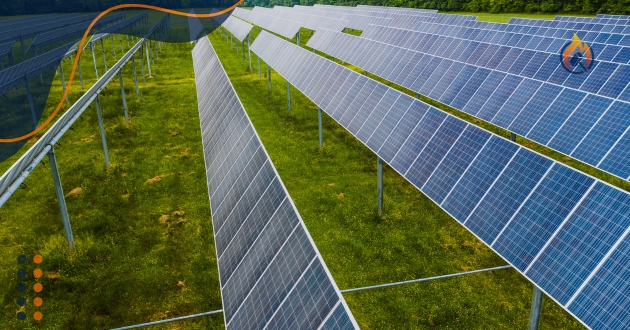Renewable energy tech innovations are revolutionizing the way we approach sustainability and energy consumption. From solar panels to wind turbines, these technologies are helping reduce reliance on fossil fuels while mitigating climate change.
In recent years, renewable energy tech innovations have grown exponentially. This growth is driven by increasing global demand for sustainable solutions, especially as governments and corporations alike set ambitious carbon reduction targets.
Moreover, renewable energy tech innovations are also creating economic opportunities. New industries and jobs are emerging as a direct result of advancements in this sector. For instance, the development of more efficient solar cells has led to lower production costs, making solar power more affordable for consumers and businesses alike.
The Role of Solar Power in Renewable Energy

Solar power is one of the most prominent examples of renewable energy tech innovations. Advances in photovoltaic (PV) technology have made solar panels more efficient, enabling them to convert sunlight into electricity with minimal energy loss.
These innovations have also reduced the cost of solar energy, making it a viable option for both residential and industrial use.
Furthermore, developments in solar storage, such as solar batteries, ensure that energy produced during the day can be stored for use at night.
Recent breakthroughs in solar panel efficiency include the use of perovskite materials, which have the potential to significantly increase energy conversion rates.
Additionally, bifacial solar panels, which capture sunlight from both sides, are now being implemented to further enhance energy production.
These innovations are crucial for maximizing the potential of solar energy in the renewable energy landscape.
Wind Energy Advancements (Renewable energy tech innovations)
Another major area of renewable energy innovations is wind energy. Modern wind turbines have evolved considerably, becoming more efficient and less costly to produce.
Engineers have developed larger turbines that can capture more wind, increasing their energy output.
Offshore Wind Farms and Their Impact
Offshore wind farms are gaining traction due to their high energy output potential.
With advancements in floating turbine technology, it’s now possible to deploy wind farms in deeper waters, where wind speeds are higher.
This innovation is expected to play a critical role in expanding the capacity of wind energy globally.
Energy Storage Solutions (Renewable energy tech innovations)
One of the key challenges in renewable energy is ensuring a consistent energy supply. Innovations in energy storage, particularly in battery technology, are helping overcome this hurdle.
Modern lithium-ion batteries, for example, can store large amounts of energy generated by renewable sources, making it possible to maintain a stable energy supply even when conditions aren’t ideal for energy production.
The Rise of Grid-Scale Batteries
Grid-scale batteries are becoming increasingly important as part of the renewable energy infrastructure. T
hese large-scale storage systems allow for excess energy produced during peak times to be stored and distributed when needed.
This technology is essential for integrating renewable energy into national power grids, ensuring that renewable sources can provide a steady and reliable supply of electricity.
Bioenergy and Renewable Energy Tech Innovations
Bioenergy is another significant area of renewable energy innovations. By converting organic materials such as agricultural waste, wood, and even algae into energy, bioenergy presents a sustainable alternative to traditional fossil fuels.
Modern advancements in biomass technology have made the process more efficient, ensuring higher energy yields while reducing environmental impacts.
Recent developments in biomass conversion focus on improving the efficiency of converting plant materials into usable energy.
Innovations like gasification and anaerobic digestion are gaining attention as they allow for the transformation of biomass into cleaner fuels, such as biogas and bioethanol, which can be used in power generation and transportation.
The Role of Renewable Energy in Smart Home Automation Systems
As homes become increasingly interconnected, smart home automation systems are playing a crucial role in optimizing energy use.
These systems allow homeowners to manage their energy consumption more efficiently, often integrating renewable energy sources like solar panels or wind turbines.
By using automated controls and real-time data, smart homes can reduce energy waste and lower electricity costs, all while contributing to a more sustainable future.
The Integration of IoT in Renewable Energy Tech Innovations
The Internet of Things (IoT) is significantly enhancing the potential of renewable energy tech innovations by enabling smarter, more connected energy systems.
IoT platforms, like Tuya, are making it easier to manage renewable energy sources by offering real-time monitoring and control of energy consumption.
These platforms allow for more efficient energy use in both residential and industrial settings, making renewable energy more accessible and practical.
IoT’s Role in Optimizing Energy Systems (Renewable energy tech innovations)
By integrating IoT technology, renewable energy systems can communicate with each other and with consumers to optimize energy production and consumption.
For example, IoT sensors can track wind turbine performance and adjust operations based on weather conditions to maximize energy output.
This kind of smart integration helps reduce energy waste and ensures that renewable energy sources are being utilized to their full potential.
FAQ – Renewable Energy Tech Innovations
1. What are renewable energy tech innovations?
Renewable energy tech refer to the latest advancements and technologies developed to improve the efficiency, cost-effectiveness, and scalability of renewable energy sources like solar, wind, geothermal, and bioenergy. These innovations are crucial for increasing the adoption of clean energy and reducing reliance on fossil fuels.
2. How do renewable energy tech innovations help reduce carbon emissions?
These innovations allow for more efficient energy production and storage, minimizing energy waste and enhancing the overall performance of renewable energy systems. By replacing fossil fuels with clean energy, they significantly reduce greenhouse gas emissions, helping to combat climate change.
3. What are some examples of renewable energy tech innovations?
Some notable examples include advanced solar panels with higher efficiency, offshore wind turbines, enhanced geothermal systems, bioenergy from waste materials, and smart grid technologies. These innovations are continually evolving to meet global energy demands more sustainably.
4. How are smart grids connected to renewable energy tech innovations?
Smart grids play a vital role in renewable energy innovations by allowing for real-time energy management and distribution. They enable renewable energy sources like solar and wind to be efficiently integrated into national power grids, ensuring a stable and reliable energy supply even when renewable energy production fluctuates.
Conclusion
In conclusion, renewable energy tech are reshaping the global energy landscape, offering sustainable alternatives to traditional fossil fuels. Through advancements in solar, wind, geothermal, and bioenergy technologies, we are seeing more efficient, cost-effective solutions that help reduce carbon emissions and combat climate change.
Moreover, the integration of smart technologies, such as IoT and smart grids, is enhancing the capabilities of renewable energy systems. These innovations not only make energy management more efficient but also enable renewable sources to become more reliable and accessible for both residential and industrial use.
As research and development continue, the future of renewable energy tech innovations holds the promise of a greener, more sustainable world. With ongoing improvements in efficiency and scalability, renewable energy will play a pivotal role in meeting global energy demands while protecting the planet.


